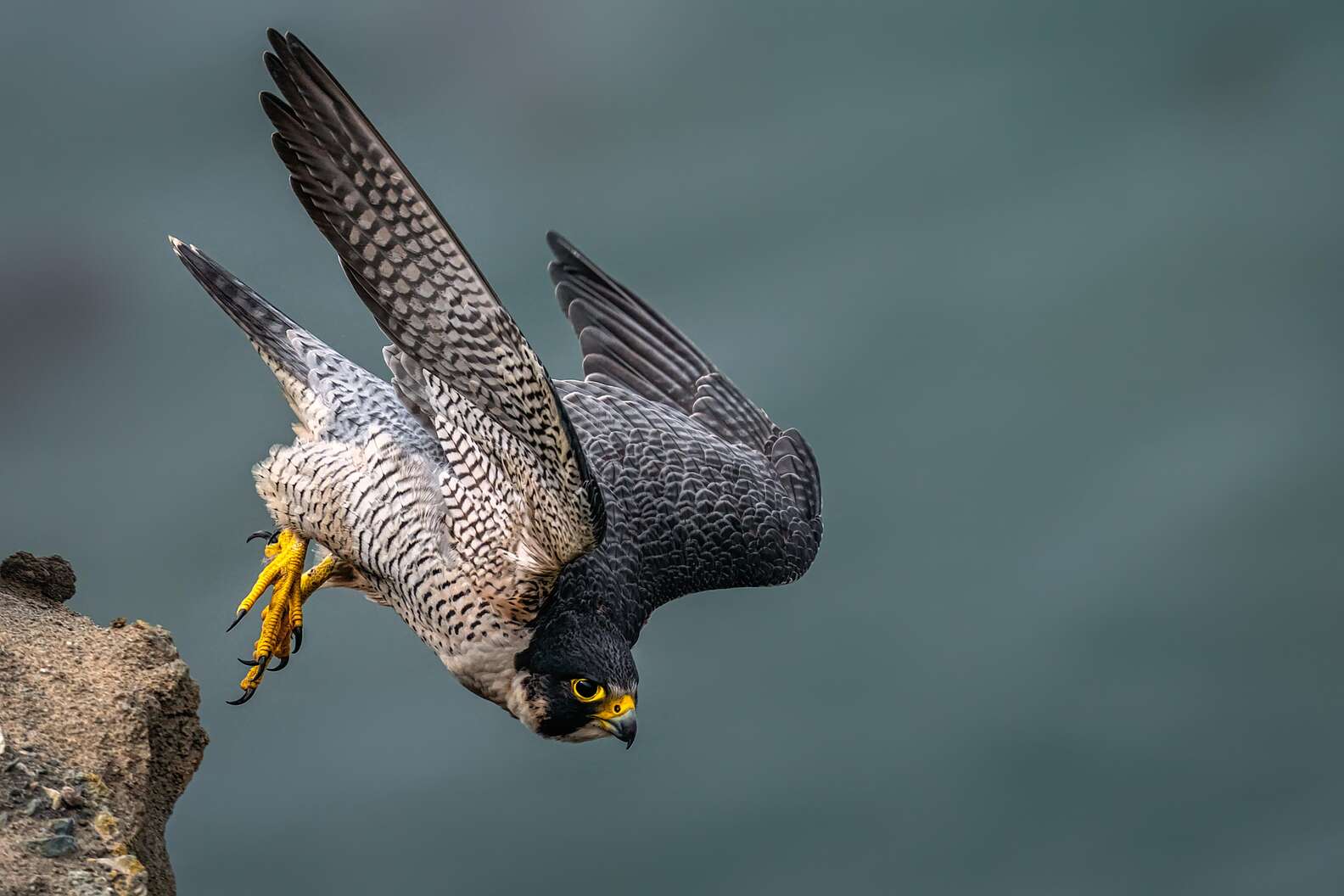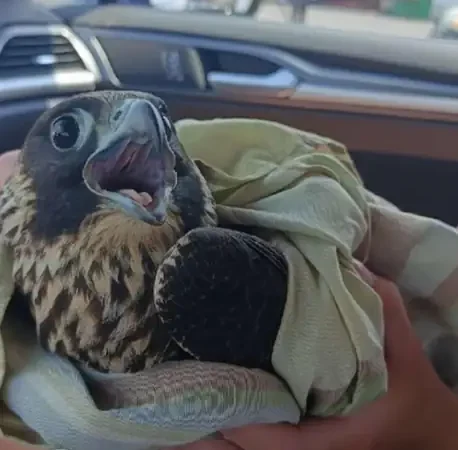Tracie Young, a licensed wildlife rehabilitator, received a call earlier this summer about an injured bird. On the line were two friends, who told Young they’d found a hawk in the middle of the road and wrapped him in a blanket.
Young instructed them to drive the bird to Raven Ridge Wildlife Center, where she works. The whole situation seemed routine to Young, until she met the young women outside.
“Right away I spotted the head,” Young told The Dodo. “I said, ‘That is not a hawk … you’re holding a peregrine falcon.’”

Peregrine falcons are the fastest animals on Earth, reaching speeds of up to 250 miles per hour.
While all birds of prey are dangerous to transport, Young said that peregrine falcons “don’t mess around.” Their talons have more power than many hawks’, and their notched beaks make them particularly formidable if they feel threatened.
“That beak could cause more damage than, say, a red tailed hawk or a Cooper’s hawk,” Young said. Peregrine falcons also tend to be more energetic than other bird species.

Needless to say, the two friends who’d rescued the falcon were shocked — and very lucky.
They first saw the bird in the road, stunned and unmoving, possibly clipped by a car. After that kind of trauma, birds of prey typically turn into little living statues.
“They don’t know what’s going on,” Young said. “They can’t focus … They have their eyes open, but they’re just kind of out of it.”

Had the peregrine falcon emerged from the daze during the drive to Raven Ridge Wildlife Center, he would’ve gone into fight or flight mode, understandably.
“It’s like that light bulb goes off and it’s like, ‘Oh my God, I’m in a car. I’m with humans. I’m with a predator,’” Young said.

After a very careful intake, Young determined the peregrine falcon was still a bit of a baby, who’d likely hatched earlier this year. He probably got lost looking for food.
“[That] is not where a peregrine falcon nest would be,” Young said. These birds prefer rocky cliffs or buildings, but this guy was zooming around cornfields.
Miraculously, the falcon suffered no injuries. After a few days of pain meds and decompressing, the powerful bird was already eating on his own.

